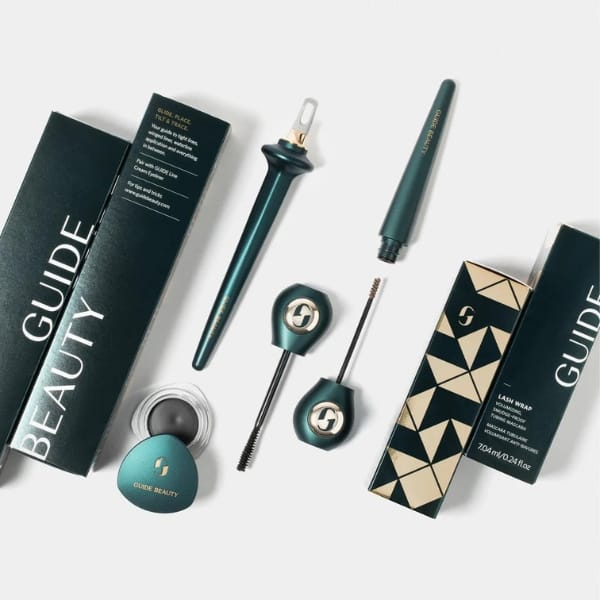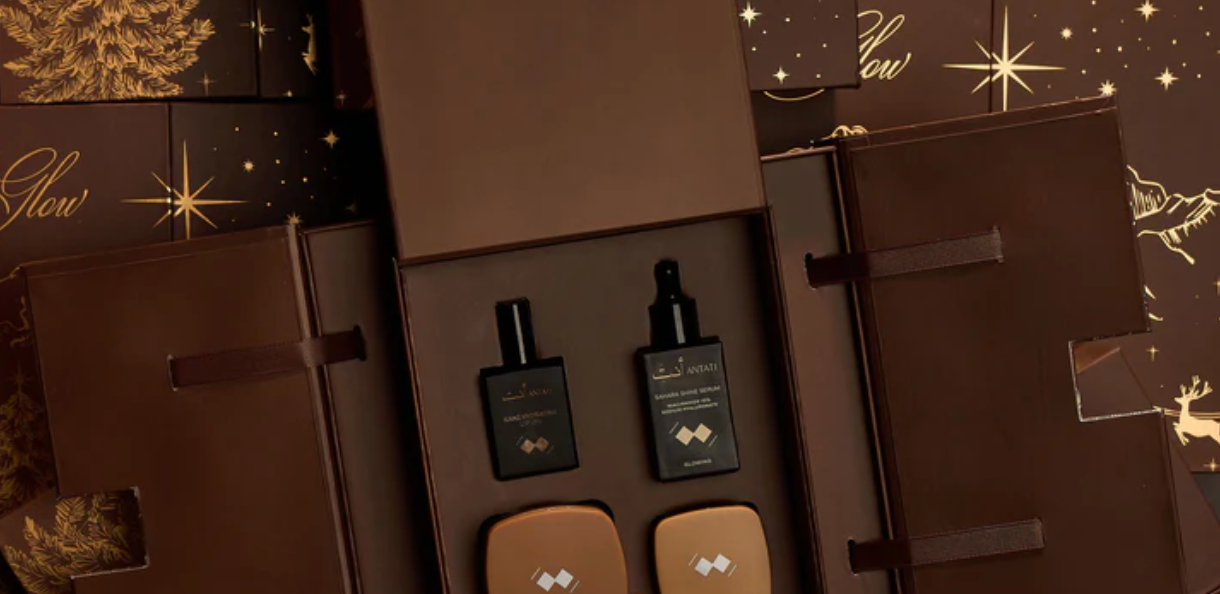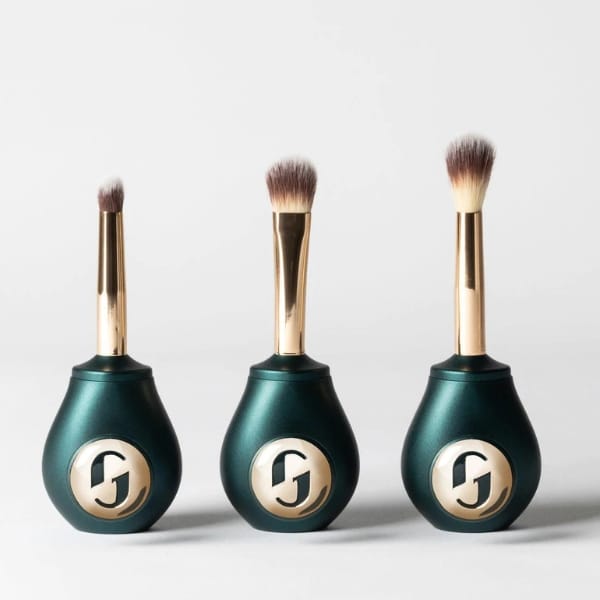
Guide Beauty, how universal design is becoming a competitive advantage
We met with founder Terri Bryant who developed the beauty brand Guide Beauty from her own experience as a makeup artist diagnosed with Parkinson's disease. She went on a journey to develop an inclusive makeup range with easy-to-handle tools that help application. In this article we hope to share insights into designing makeup tools with inclusivity in mind, emphasising the importance of human factors engineering and user experience. We discussed the need for accessible beauty products, particularly eyeliner, and the challenges of balancing sustainability and accessibility in product development.
Guide Beauty is on a mission to “create a culture of empowered beauty through the development of a “culture of broader inclusion through Universal Design”.
Living with a disability and finding creative solutions
re-sources: What is the genesis of guide beauty, and why develop a new beauty brand?
Terri Bryant:
Living with a disability has inspired me to adapt my makeup techniques and tools. On my journey with a degenerative condition, from the initial diagnosis to finding creative ways to adapt and continue my work as a makeup artist. Guide Beauty was born the day I received my diagnosis.
It had been years since my skill set had been shifting, as it took years to finally get a diagnosis. During that time, I was finding myself removed from the place that was always my most comfortable zone, my community, my livelihood, my artistry outlet, my friendships. I was thrown by the fact that I wasn't comfortable in that space anymore.
So the day I got my diagnosis, obviously, not news anybody wants to hear, I started to think about how my life would progress from then on.
The truth is I can get my hair blown once a week but makeup is a daily thing, and again, it's something I've always been able to do, not just because it was my livelihood, but because it’s my happy place and my creative outlet.
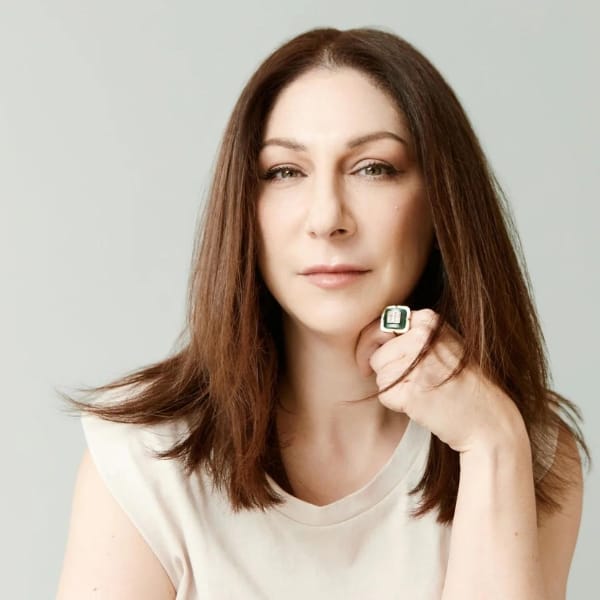
And so I went home that day, and I took out my makeup kit, and I took out my husband's toolkit. And literally like, I mean, really good duct tape and all sorts of things because I've been a makeup artist for years and so I understood sort of mechanics of artistry, so I thought I could solve it.
So, intuitively, I started to figure out stability, and grip.
I'd spent all these years trying to teach people how to do makeup. And I said to my husband, this is really easy. This isn't only easier for me, but this would have been fun if I had this problem. A lot of people sat in my makeup chair and said makeup wasn't easy. And there was kind of this “aha” moment where I thought “this could be bigger than me”.
I developed my own tools for six months, and I realised that if I wanted to go to the next level I needed the support of design experts. And then I worked with a design team that specialises in human factors engineering, a new design method.
Designing makeup tools for better grip and application
re-sources: How did you then develop the designs for market release?
Terri Bryant:
It was about 2017. We invited consumers to bring their makeup bags, and asked them to start playing. We saw with our own eyes and understood the sticking points across the board. Whether it was the professional or the newbie to makeup or somebody like me, where her/his hand wasn't steady. We started to recognise that grip and stability were missing. Looking at traditional tools, a lot of pencils are like a thin cylinder and can be hard to hold.
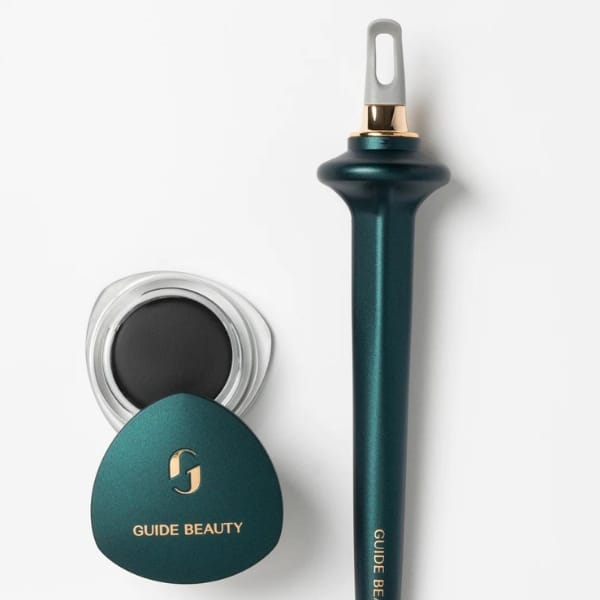
So as a makeup artist, I wanted a tool that would offer easier application. There were over 100 iterations of our hero product, our eyeliner applicator the Guide Beauty Wand. And when it comes to formulas we had to adapt them as well.
Most traditional creams and gels which work with brushes, are very soft formulas. The challenging part was figuring out how much product goes on the applicator. We wanted to create a formula that was almost a foam like so that when you apply it with the applicator tip the user has a rubber like and flexible tip that when you apply it. It picks up the right amount of formula with no excess, blobs or else.
It was about finding balance, as my issues changed over the years. In the beginning, it was more about a grip and a disconnection, now it's more about a shaky hand. Everybody's story is different, so it’s important to find the balance between steady things, heavier accessories, or lighter weight product for somebody else. We are always working to find that middle ground that benefits the most people.
re-sources: How long did it take to develop this innovative idea?
Terri Bryant:
We launched the brand in 2020, so it took us three years of development and immediately became a direct-to-consumer brand (Covid Times).
During that time, since the world slowed down we had the opportunity to get on calls and meet with influencers and explain the concept, and have people engaged in the fun thing. It was beautiful to see this universal design concept that people could understand. Initially, it was connected to my backstory, but then one day Mandy Moore talked about it (@mandymooremm, on Instagram) saying that it was a game changer.
If you have difficult dexterity, you don’t need to have a mobility problem. Caps can be really hard to open, for instance, some make-up palettes can be also hard to slide open. It’s an everyday, everybody’s problem.
The brand is mainly in the US but is available globally through direct purchase on its website. They had a special partnership with actress Selma Blair to bring more consumer awareness. The range includes 15 make-up products. Terri hope to bring more of these products to the beauty market to make it more accessible and more inclusive through retail partnerships or else.
